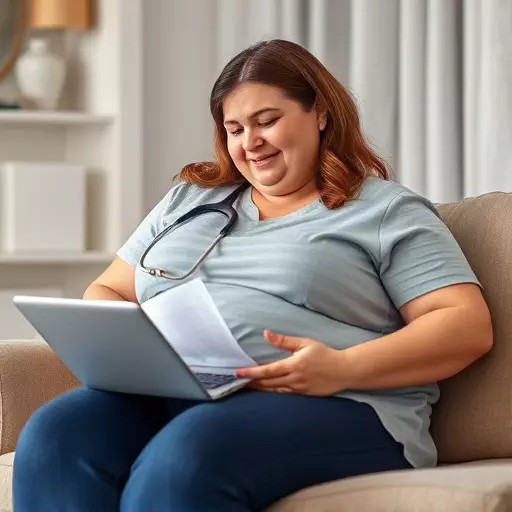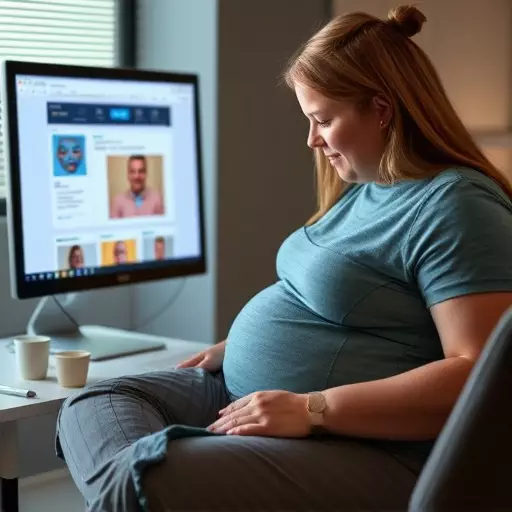In today's digital age, virtual obesity care platforms and telehealth treatments powered by GLP-1 in Akron are revolutionizing weight loss. These innovative solutions offer personalized guidance, remote monitoring, and continuous communication through various technologies, enhancing accessibility for individuals worldwide. By breaking down geographical barriers and providing interactive tools, these platforms improve patient outcomes and promote sustainable lifestyle changes. The future looks bright with advancements like AI-driven meal plans and tailored coaching, making digital weight reduction care more efficient and accessible than ever.
In today’s digital era, innovative solutions are transforming weight reduction care. This article explores cutting-edge digital platforms designed to support individuals on their journeys towards healthier weights. From understanding the fundamentals of these platforms to delving into novel approaches like GLP-1 in Akron and the growing impact of telehealth obesity treatment programs, we uncover a world where virtual care is revolutionizing access to effective weight management solutions. Additionally, we analyze benefits, challenges, and future trends shaping this dynamic landscape.
- Understanding Digital Platforms for Weight Reduction Care
- The Role of GLP-1 in Akron: A Novel Approach
- Telehealth Obesity Treatment Programs: Reaching More Patients
- Benefits and Challenges of Virtual Obesity Care Platforms
- Future Trends: Enhancing Digital Solutions for Healthy Weight Management
Understanding Digital Platforms for Weight Reduction Care

In today’s digital era, understanding and leveraging digital platforms for weight reduction care has become increasingly important. These platforms offer a range of services tailored to support individuals in their journey towards healthier lifestyles, including telehealth obesity treatment programs that provide access to medical professionals from the comfort of one’s home. GLP-1 in Akron, for instance, refers to glucagon-like peptide-1, a hormone that aids in blood sugar regulation and weight management. Many virtual obesity care platforms incorporate this knowledge into their programs, offering personalized guidance and monitoring tools.
The integration of technology in healthcare has revolutionized the way we approach obesity treatment. Virtual platforms allow for continuous communication between patients and healthcare providers, ensuring ongoing support and accountability. Through video conferencing, chat features, and mobile apps, these platforms facilitate regular check-ins, progress tracking, and educational content related to nutrition, exercise, and mental well-being. This shift towards digital obesity care is not just convenient; it’s a game-changer in terms of accessibility and efficacy for those seeking to manage their weight.
The Role of GLP-1 in Akron: A Novel Approach

The Role of GLP-1 in Akron: A Novel Approach to Telehealth Obesity Treatment Programs
In the realm of digital platforms for weight reduction care, novel approaches like using GLP-1 (Glucagon-like peptide-1) in Akron are emerging as game changers. This hormone, naturally produced by the gut, plays a crucial role in regulating blood sugar levels and promoting satiety. By leveraging GLP-1 in telehealth obesity treatment programs, virtual obesity care platforms can offer more personalized and effective solutions for patients. The implementation of this strategy allows healthcare providers to remotely monitor and adjust treatments based on individual responses, making it an innovative step forward in the fight against obesity.
Akron’s adoption of GLP-1 therapy within telehealth models opens new avenues for accessible and comprehensive weight management. Virtual platforms can provide educational resources, personalized diet plans, and exercise routines tailored to each patient’s needs. Moreover, these platforms enable regular consultations with healthcare professionals via video conferencing, ensuring continuous support and guidance throughout the journey. This integrated approach has the potential to enhance adherence, improve outcomes, and revolutionize how we address obesity on a global scale.
Telehealth Obesity Treatment Programs: Reaching More Patients

In recent years, Telehealth Obesity Treatment Programs have emerged as a game-changer in the healthcare landscape, particularly for weight reduction care. These virtual obesity care platforms leverage technology to provide specialized services, such as GLP-1 in Akron, to patients who may not have easy access to traditional in-person treatments. By offering remote consultations, personalized diet and exercise plans, and ongoing support through video conferencing, these programs reach a broader audience, including individuals in rural or underserved areas.
The benefits of telehealth obesity treatment are multifaceted. It enhances accessibility by eliminating geographical barriers, ensuring that patients can receive expert care from the comfort of their homes. Moreover, virtual platforms often include interactive tools and resources, fostering engagement and adherence to treatment protocols. This innovative approach not only improves patient outcomes but also promotes a more sustainable lifestyle change, making it a promising solution for managing obesity in the digital era.
Benefits and Challenges of Virtual Obesity Care Platforms

Virtual Obesity Care Platforms have emerged as a powerful tool in the fight against rising obesity rates, offering innovative solutions for those seeking weight reduction support. These platforms leverage telemedicine and digital technologies to connect individuals with healthcare professionals, creating accessible and convenient care models. One of the key benefits is increased accessibility; patients can participate in GLP-1 in Akron or similar telehealth obesity treatment programs from the comfort of their homes, eliminating geographical barriers. This approach is particularly beneficial for individuals with busy schedules or those who face challenges accessing traditional clinical settings.
However, alongside these advantages, virtual care also presents certain challenges. Ensuring effective communication and building a strong therapeutic relationship can be more difficult in a virtual setting. Additionally, maintaining patient engagement and motivation over the long term requires innovative strategies to address the psychological aspects of weight loss. Despite these challenges, continuous advancements in technology and healthcare practices are refining virtual obesity care platforms, making them increasingly viable and successful options for managing this complex health issue.
Future Trends: Enhancing Digital Solutions for Healthy Weight Management

The future of digital platforms for weight reduction care looks promising, with advancements that could transform how individuals manage their health. One key trend is the integration of Glp-1 based treatments in Akron and other regions. These peptides have shown significant potential in aiding weight loss by regulating insulin and reducing hunger, and their administration via digital platforms can ensure compliance and personalized dosing. Telehealth obesity treatment programs are also gaining traction, providing virtual consultations, education, and support from healthcare professionals.
Furthermore, virtual obesity care platforms will likely become more sophisticated, leveraging artificial intelligence to offer tailored meal plans, exercise routines, and behavioral coaching based on individual user data. This level of personalization can enhance adherence to weight loss programs, making them more effective for long-term success. With ongoing innovations in digital health, the journey towards healthy weight management is set to become increasingly accessible and efficient.
